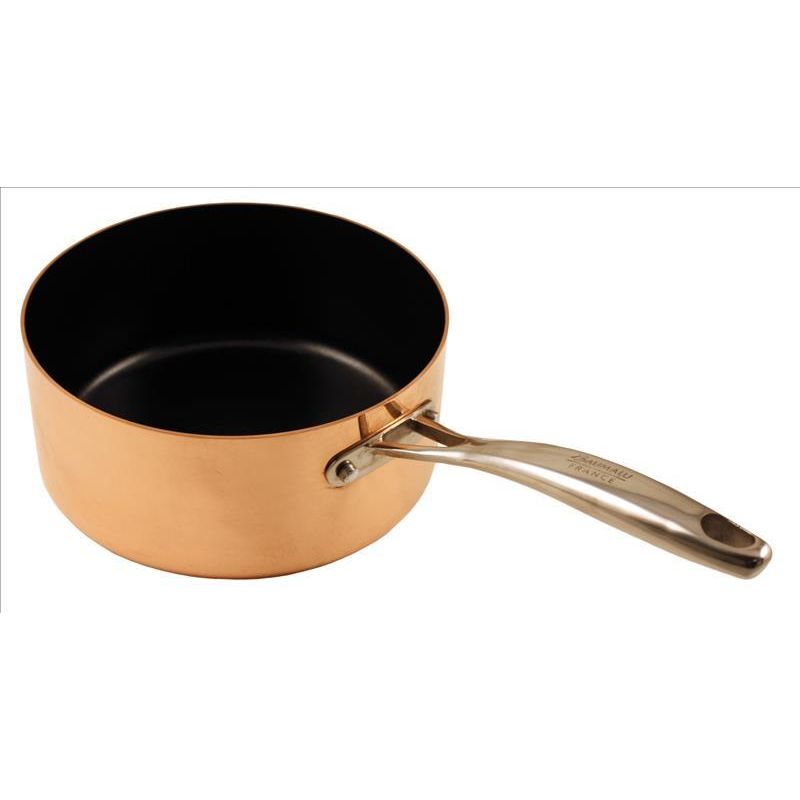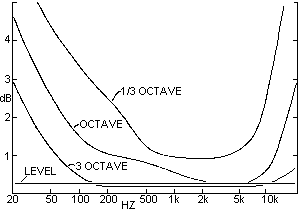Hi, i wonder what the ultimate speaker cable design is? my theory is to have a few solid conductor in occ copper and each conductor is in its own teflon tube with air insulation and nothing more. what do you guys think of the design?
and what is your ultimate diy speaker cable?
please let us know!
and what is your ultimate diy speaker cable?
please let us know!
Any thread with "ultimate" in the title is bound to quickly lead to a pooling of ignorance and myths.
To first order, all that matters in a loudspeaker cable is series resistance. Even this matters not too much, within reason. So no need for fancy materials or funny shapes: copper is fine, solid or flexible. Many people use mains cable.
To second order, the inductance and capacitance should not be too unusual. That means two copper conductors running alongside each other with not too much space between them. Unusually wide spacing boosts inductance and RF pickup. Unusually narrow spacing increases capacitance and might cause instability in some amplifiers.
The insulation does not matter at all, as long as it insulates. PVC is fine. Teflon is best avoided, but will do little harm if used for a speaker cable - much more harm using teflon for an interconnect (especially with silver).
This all assumes, of course, that the aim is high quality sound reproduction. If the aim is something else then other speaker cable designs may be preferred. Other aims may be: spending a lot of money, impressing friends, following fashion.
To first order, all that matters in a loudspeaker cable is series resistance. Even this matters not too much, within reason. So no need for fancy materials or funny shapes: copper is fine, solid or flexible. Many people use mains cable.
To second order, the inductance and capacitance should not be too unusual. That means two copper conductors running alongside each other with not too much space between them. Unusually wide spacing boosts inductance and RF pickup. Unusually narrow spacing increases capacitance and might cause instability in some amplifiers.
The insulation does not matter at all, as long as it insulates. PVC is fine. Teflon is best avoided, but will do little harm if used for a speaker cable - much more harm using teflon for an interconnect (especially with silver).
This all assumes, of course, that the aim is high quality sound reproduction. If the aim is something else then other speaker cable designs may be preferred. Other aims may be: spending a lot of money, impressing friends, following fashion.
* makes popcorn
Teflon coated copper?
Somewhat overkill for making popcorn.

I read somewhere on this very website that silver and teflon are a particularly bad combination for triboelectricity i.e. transferring charge via friction. I guess this means more microphony and handling noises. Not what most people want in an interconnect, but it could make things sound 'lively'?
I agree.
Like me. I use 4 wire standard wire, 2 for tweeters, 2 for woofers in the same cable as I'm using separate amps for them (Biamplification).
Some time ago I used 300Ω line for speakers at low power (3W).
Many people use mains cable.
Like me. I use 4 wire standard wire, 2 for tweeters, 2 for woofers in the same cable as I'm using separate amps for them (Biamplification).
Some time ago I used 300Ω line for speakers at low power (3W).
Teflon coated copper?
Somewhat overkill for making popcorn.

you are a funny clown. I will grant you that. But please step aside, people are trying to have a conversation.
enthusiasm is sometimes OK, but why doesn't it often extend to reading actual Psychoacoustic and EE principles, existing measurements and human listening thresholds?
the EE is over a Century old, and many of us connected by MBaud ADSL over Voice Band Telephone twisted pair laid down as much as 50 years ago are pretty strong proof that the theory works to ridiculous accuracy
and of course in Audio the measurements have been done, published
typical construction speaker cable R,L, Skin Effect have measureable and just barely, sometimes, possibly audible effects in home speaker wiring lengths, not too odd multiway dynamic speakers
as mentioned insulation dielectric properties are by the numbers irrelevent to Audio at amp/speaker impedance levels
the effect of too much C on some amp outputs causing MHz instability/oscillation is the big problem with some exoctic cable constructions
and you should compare to known Psychoacoustic thresholds too when planning a listening test:
it seems like in most home audio speaker cable situations skin/proximity effects will not be expected to reach audibility if as seen from Clark's graph it takes nearly 1 dB droop over the last audio octave to be heard in controlled listening tests
the EE is over a Century old, and many of us connected by MBaud ADSL over Voice Band Telephone twisted pair laid down as much as 50 years ago are pretty strong proof that the theory works to ridiculous accuracy
and of course in Audio the measurements have been done, published
typical construction speaker cable R,L, Skin Effect have measureable and just barely, sometimes, possibly audible effects in home speaker wiring lengths, not too odd multiway dynamic speakers
as mentioned insulation dielectric properties are by the numbers irrelevent to Audio at amp/speaker impedance levels
the effect of too much C on some amp outputs causing MHz instability/oscillation is the big problem with some exoctic cable constructions
measurements just show some measurable skin/proximity effect in the last octave with even zip cord
http://www.firstwatt.com/pdf/art_spkr_cable.pdf
Pass measured 14 mOhm DC, rising to <50 mOhm/ft in 18 gage zipcord by 20 kHz - that would need 20 ft to get 1 dB rise with 8 Ohm speakers
and you should compare to known Psychoacoustic thresholds too when planning a listening test:
Clark's ABX frequency response jnd threshold curves
...
Clark, David L., "High-Resolution Subjective Testing Using a Double-Blind Comparator", Journal of the Audio Engineering Society, Vol. 30 No. 5, May 1982, pp. 330-338
ABX Amplitude vs. Frequency Matching Criteria

it seems like in most home audio speaker cable situations skin/proximity effects will not be expected to reach audibility if as seen from Clark's graph it takes nearly 1 dB droop over the last audio octave to be heard in controlled listening tests
Why should it sound different? It's just a conductor.To sound different either of them has to modify the waveform of the Audiosignal. The only thing that counts is R L and C of the wiring. Even if silver has a lower resistivity, just use a little bit thicker copper wire and you get the same R.
Silver and copper may sound different when you drop them on the floor, but if you use them as a wire they will sound exactly the same. There is only a small difference in conductivity between them, far too small to have any consequence for audio. Silver is useful if you are making UHF radio circuits or jewellery, but not audio.
Similarly, teflon may be used as an insulator when you need heat resistance - irrelevant for audio. Air is used when you need low dielectric losses at higher radio frequencies - irrelevant for audio. Wood is opposite: high loss at RF - irrelevant for audio.
Similarly, teflon may be used as an insulator when you need heat resistance - irrelevant for audio. Air is used when you need low dielectric losses at higher radio frequencies - irrelevant for audio. Wood is opposite: high loss at RF - irrelevant for audio.
you are a funny clown. I will grant you that. But please step aside, people are trying to have a conversation.
Oh, he is more than just that! This kind of sense of humor makes threads like this to be worth of paying attention at all.
Teflon coated copper?
Somewhat overkill for making popcorn.

Does using a copper pan make the popcorn taste better than say a stainless steel pan?
I find copper gives a better dynamic range between individual kernels during the heating process.
Using steel the kernels tend to all peak at the same and muddy the overall taste whereas copper seems to give a much higher degree of separation allowing the full flavour of each individual kernel through without smearing .
Using steel the kernels tend to all peak at the same and muddy the overall taste whereas copper seems to give a much higher degree of separation allowing the full flavour of each individual kernel through without smearing .
Jokes aside. The only thing I liked about a teflon sheath was it hold better when soldering the wires, doesn't melt away. Isnt the silver plating and teflon supposed to offer better corrosion handling. I have seen copper react to pvc sheath to form a green gunk. Again probably doest affect anything other than contacts.
As a conductor I don't see how copper vs silver affects sound. I can't hear a difference in anything except a badly done speaker and distorting electronics.
As a conductor I don't see how copper vs silver affects sound. I can't hear a difference in anything except a badly done speaker and distorting electronics.
- Status
- Not open for further replies.
- Home
- Member Areas
- The Lounge
- ultimate speaker cable design diy